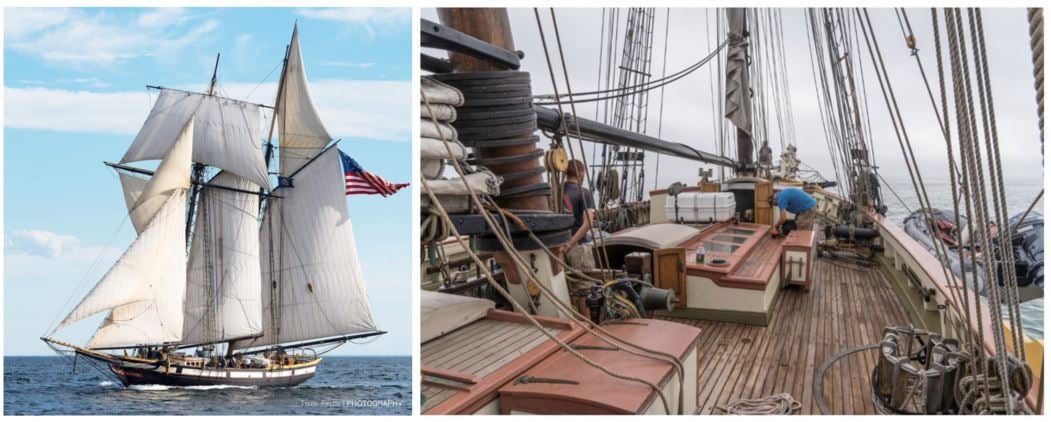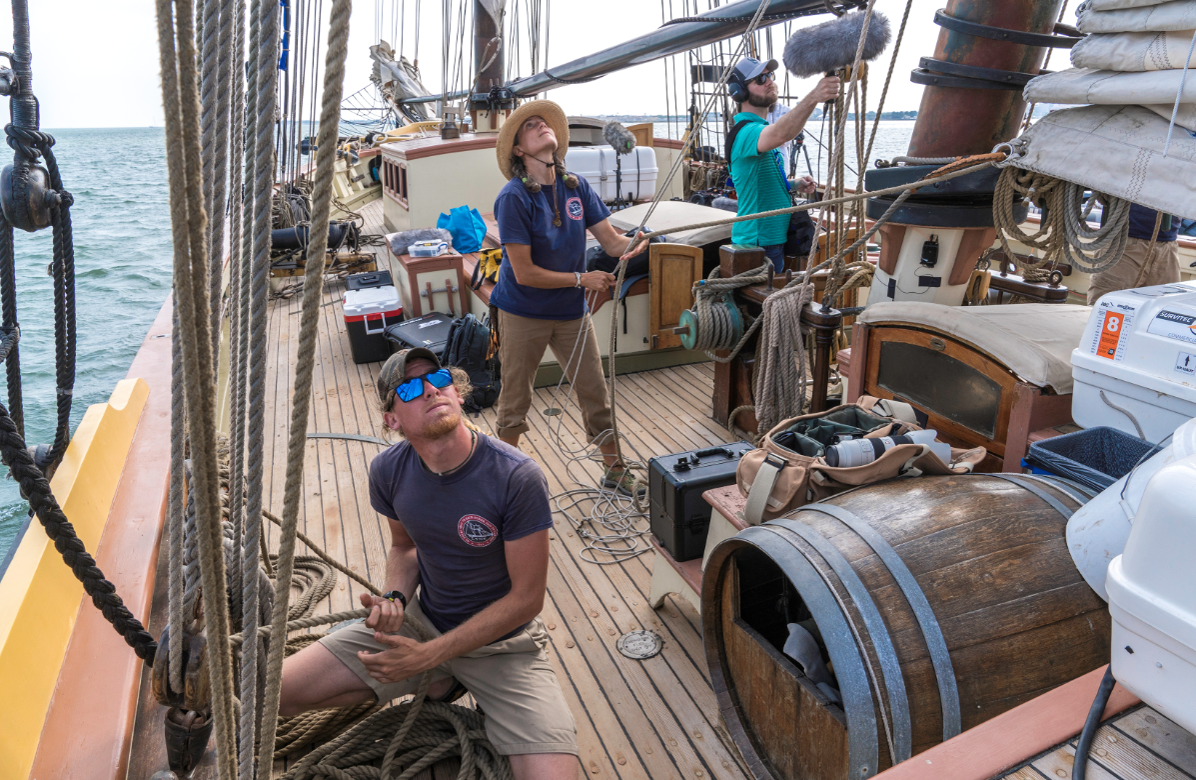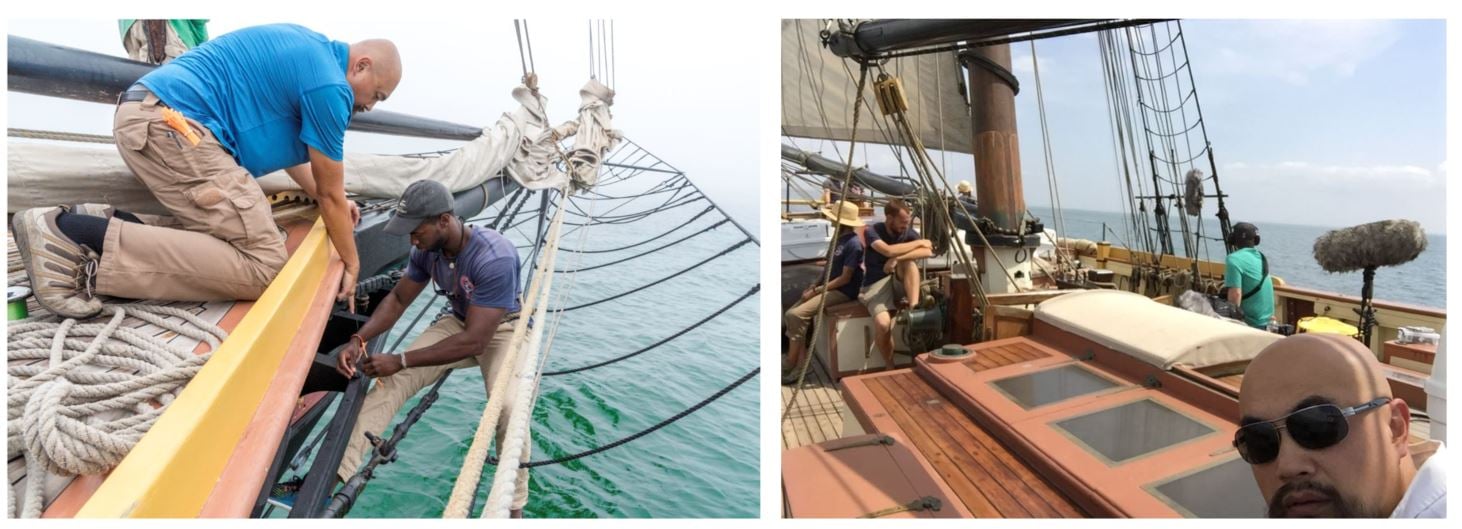
This is a behind the scenes video of ATLAS, a pirate MMO game by Studio Wildcard (Grapeshot Games). I was hired to source out, rent, and record sounds of a replica 1812 privateer sailing ship for the game.
We could not have asked for a more perfect day. Because the rented ship (named Lynx) had to travel by diesel power to our desired location for sailing, we made best use of our time by rigging multiple microphones, cables, and windshield kits to specific areas. By the time we got to a quiet location to record sailing ship sounds, we were ready with 7 on-board channels, and a separate recorder for ambisonic captures. Moreover, one of the ship mates climbed to the top area to hang two more mics to record the perspectives of what it sounds like from above. Later we used shotgun mics to point and capture specific items such as water hitting the bows, wood creaks, sails, etc. On the way out we experienced light winds and then heavier winds on the way back. Yes, that was A Perfect Day!

Onboard Settings:
Recorder: Sound Devices MixPre-10T inside a K-Tek Stingray Small audio bag
ch1 Center of Ship (Audio-Technica BP4025 Left)
ch2 Center of Ship (Audio-Technica BP4025 Right)
ch3 Bow (DPA Core 4061)
ch4 Stern (Countryman B3)
ch5 Starboard (Countryman B3)
ch6 Forward Mast (Rode NT6)
ch7 Main Mast (Wireless RodeLink)

Ambisonic Settings:
Recorder: Zoom F8n inside a Sachtler 607 audio bag
ch1-4 Soundfield ST450 mkii ambisonic microphone
Rycote WS3 windshield kit
Manfrotto 5001b light stand
Specific isolation recordings:
Recorder: Sound Devices 722 in a Sound Devices audio bag
Schoeps CMIT inside a Rycote windshield kit
K-Tek Boom pole
Sennheiser MKH-418s inside a Rycote windshield kit

SPECIAL THANKS TO:
Studio Wildcard, Audio Director Stephen Baker, Lynx ship crew, Mr. Donald Peacock, Captain Alex Peacock, Thief of Soul Imaging (photos & videos), and Marcy Shortuse.


Comments